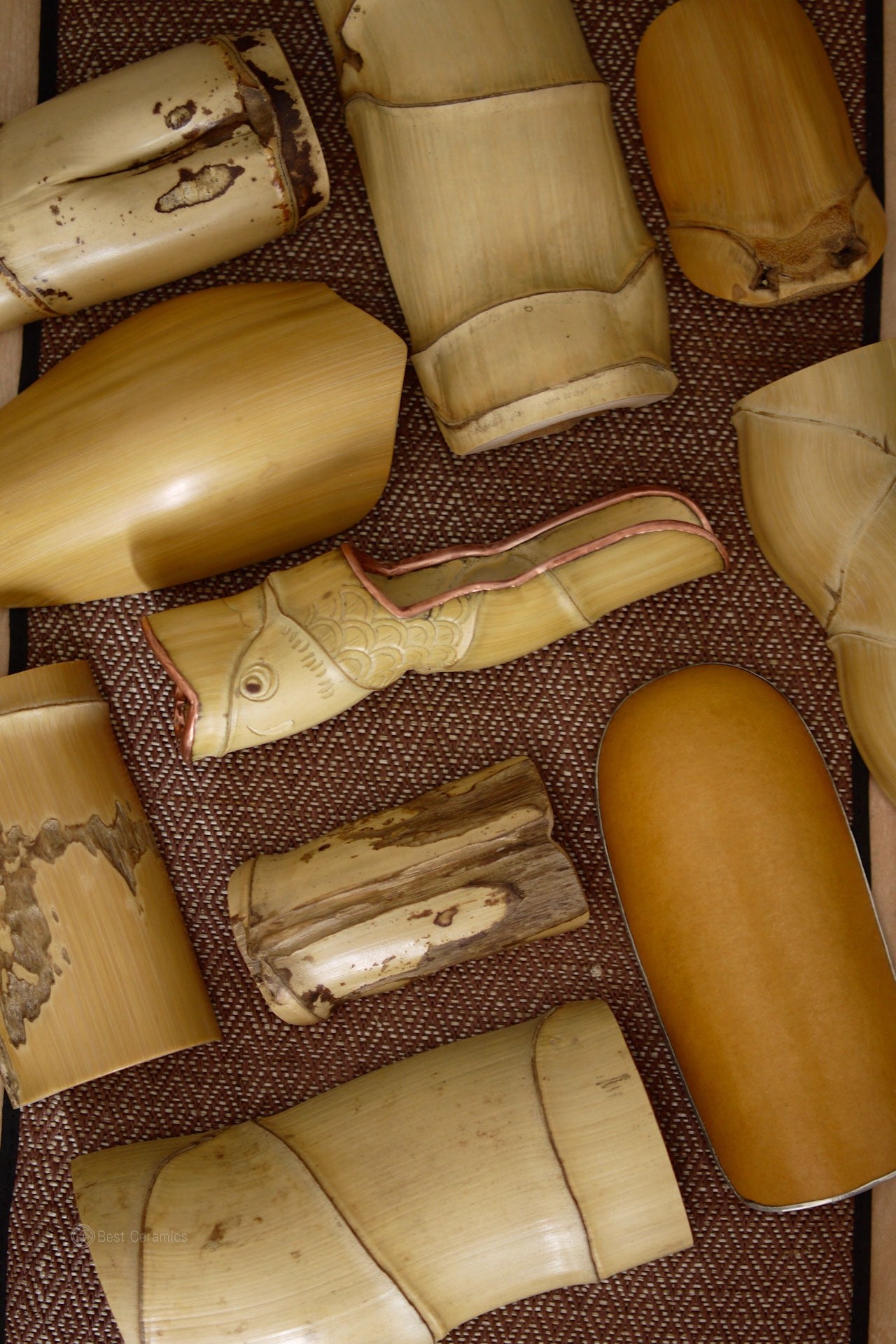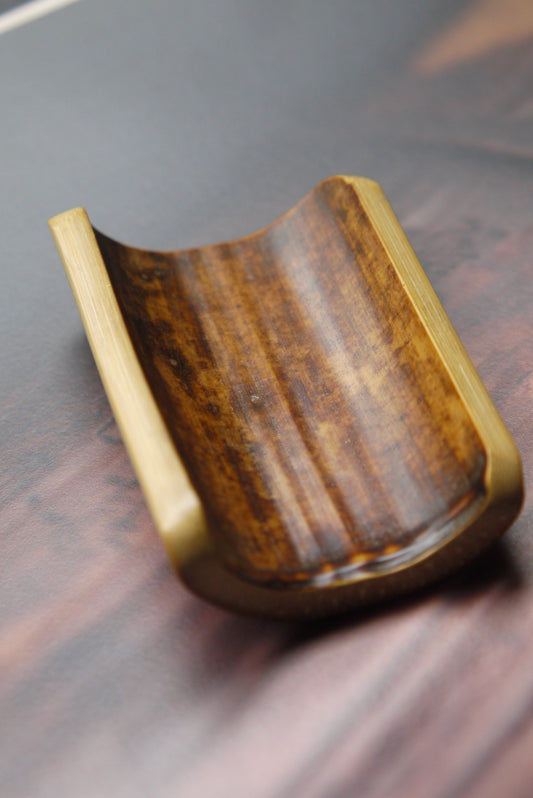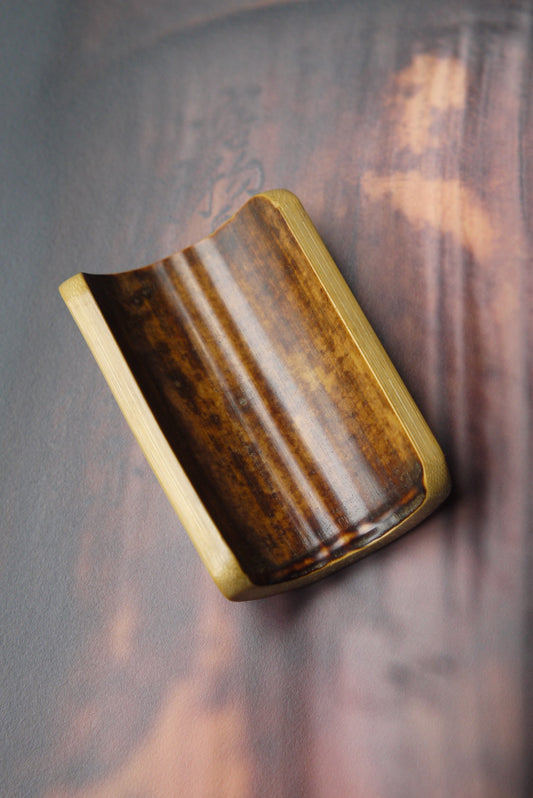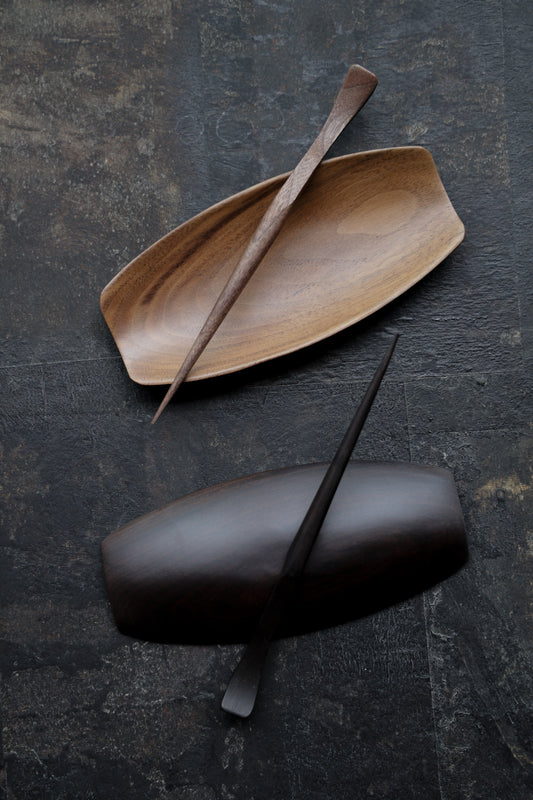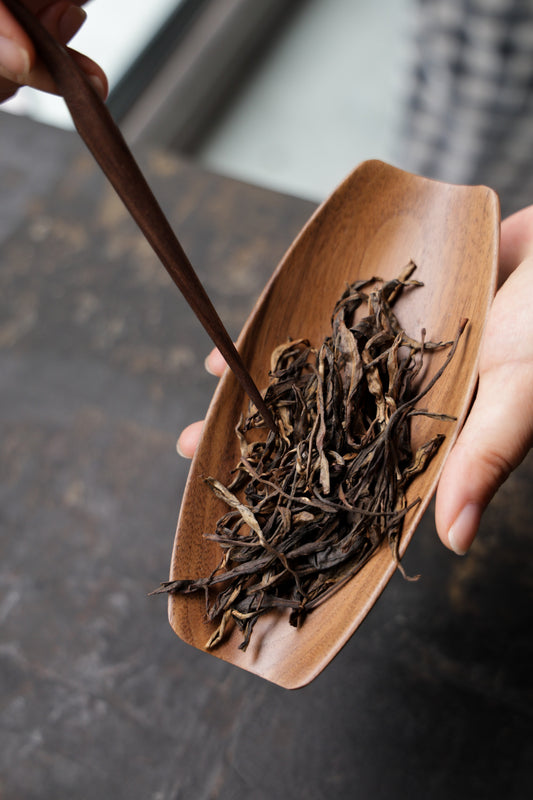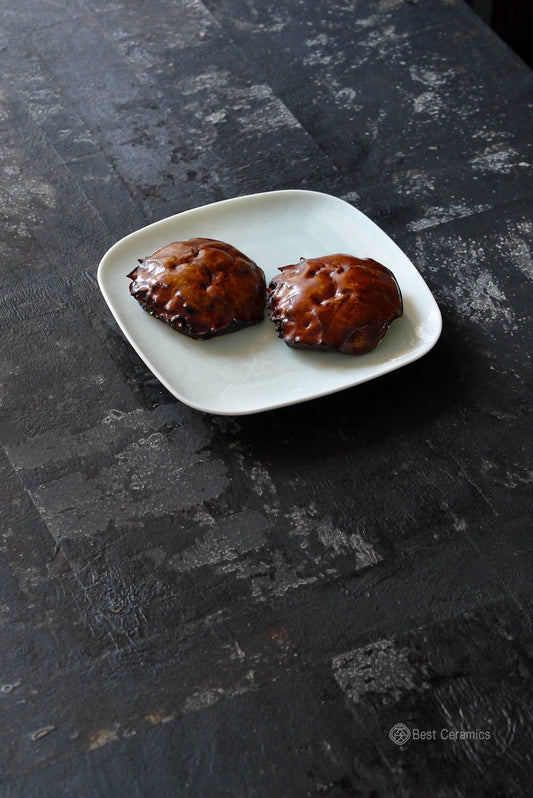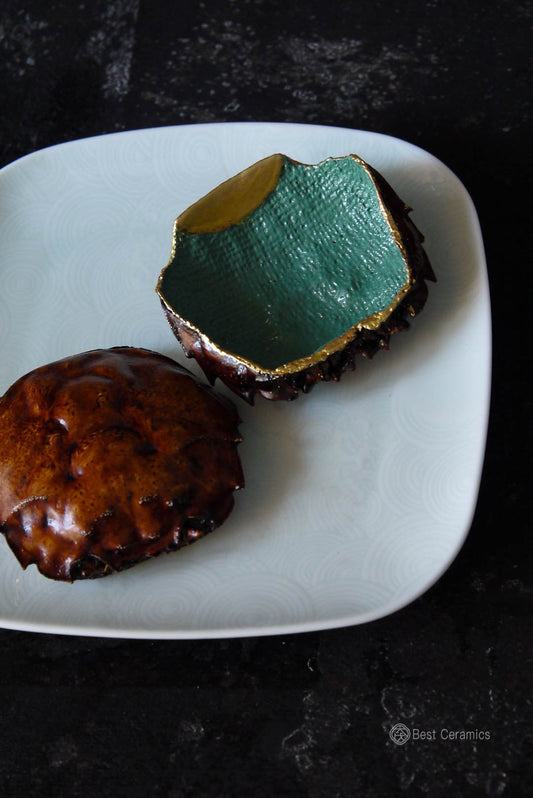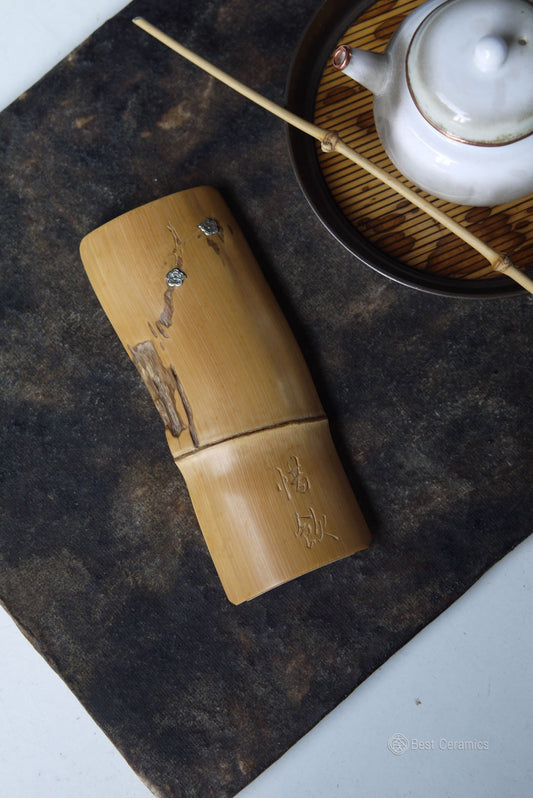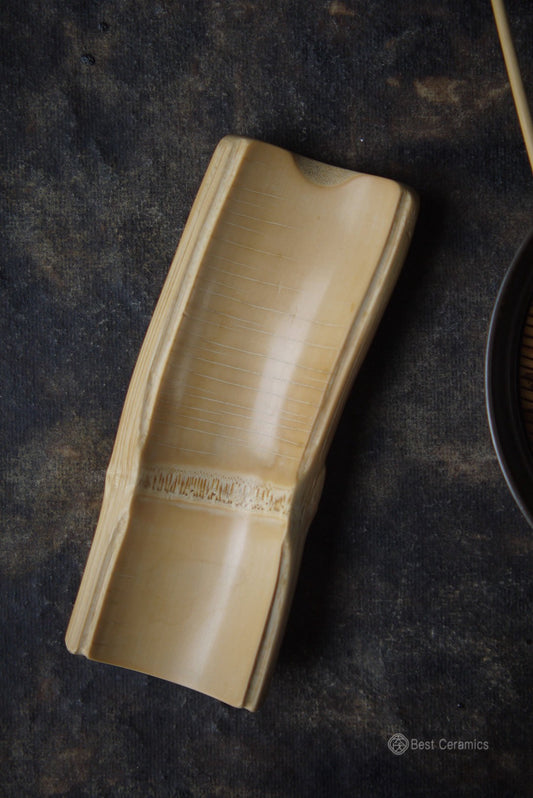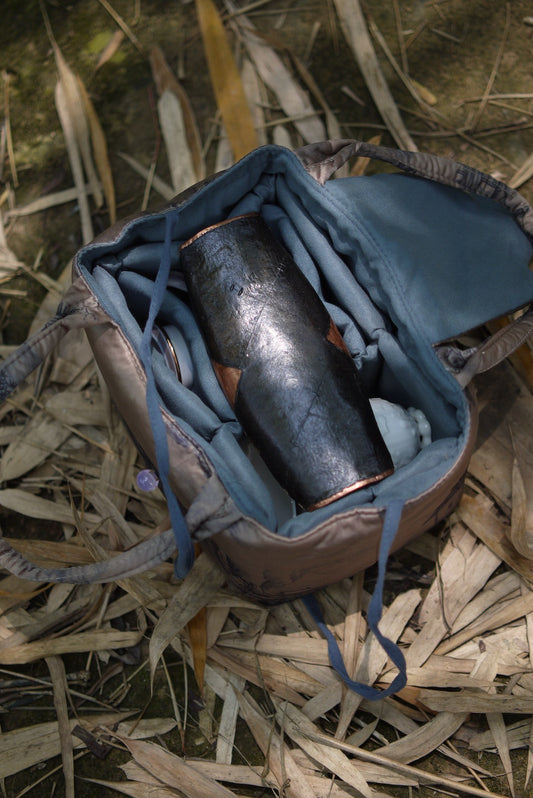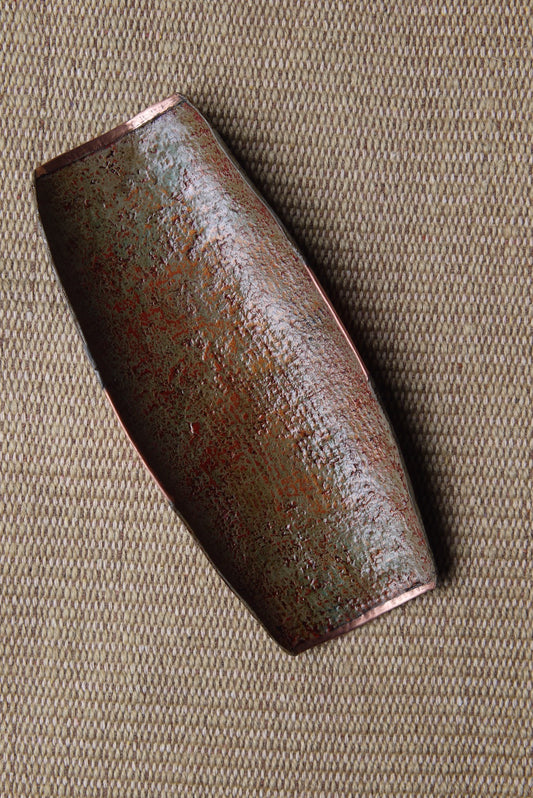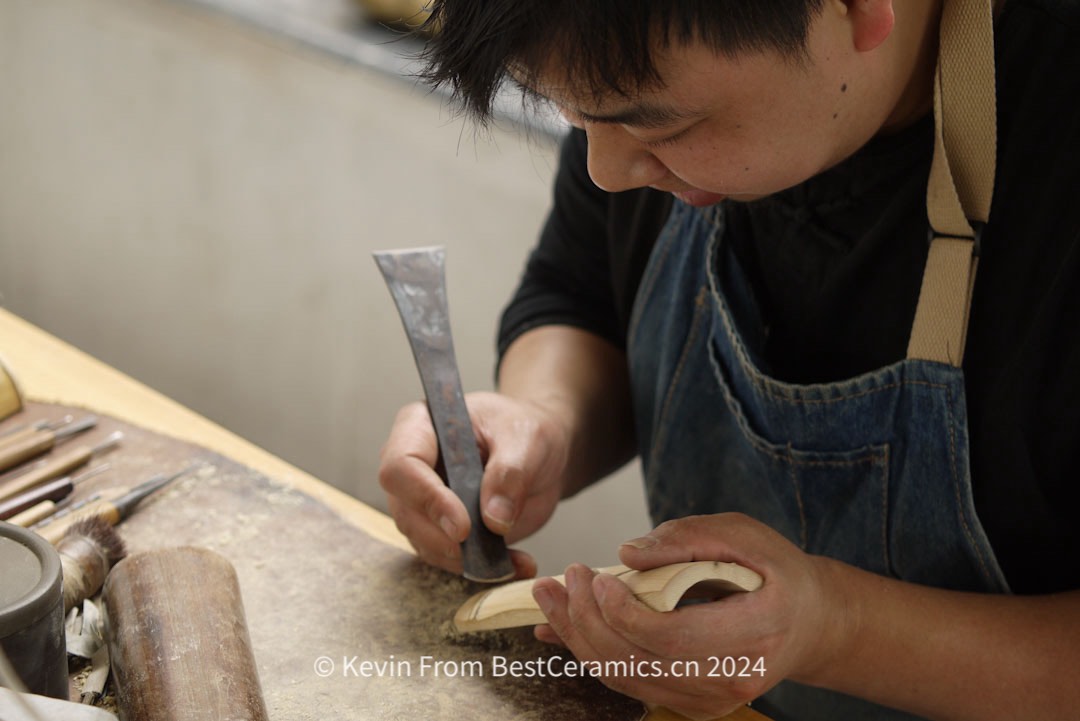
Crafting Connections Through Bamboo
YuanKevinShare
The COVID-19 pandemic over the past three years has truly changed the world.
 Like many Chinese people, during the stay-at-home period, we learned many life skills, such as making various kinds of noodles, baking, trying out dishes we wouldn’t normally dare to attempt, and even running 5 kilometers at home (not on a treadmill). We also met many people, though everyone was at home, the internet connected us all.
Like many Chinese people, during the stay-at-home period, we learned many life skills, such as making various kinds of noodles, baking, trying out dishes we wouldn’t normally dare to attempt, and even running 5 kilometers at home (not on a treadmill). We also met many people, though everyone was at home, the internet connected us all.
 Yes, after the Spring Festival in 2020, when everyone was isolated at home, I met Banwen. We shared a common hobby: creating tea scoops from bamboo. We bought bamboo materials from the same craftsman’s shop.
Not all bamboo is the same, and not all bamboo is suitable for making tea scoops. Transforming bamboo cut from the mountains into suitable craft materials requires many processes, such as removing fats and sugars from the bamboo and drying it to prevent cracking. This requires professional skills, especially to do so without any chemical treatment. The craftsman we found together is an expert with rich skills and experience.
Yes, after the Spring Festival in 2020, when everyone was isolated at home, I met Banwen. We shared a common hobby: creating tea scoops from bamboo. We bought bamboo materials from the same craftsman’s shop.
Not all bamboo is the same, and not all bamboo is suitable for making tea scoops. Transforming bamboo cut from the mountains into suitable craft materials requires many processes, such as removing fats and sugars from the bamboo and drying it to prevent cracking. This requires professional skills, especially to do so without any chemical treatment. The craftsman we found together is an expert with rich skills and experience.
 Banwen, a calligrapher and seal carver from Chongqing. Yes, we live in the same city, which is why we met.
Banwen, a calligrapher and seal carver from Chongqing. Yes, we live in the same city, which is why we met.
Half a year later, we finally met in Banwen's studio. Just like our chats on WeChat over the previous six months, as two artists with common interests, it was interesting to find that we were also both in the IT industry. He was a network engineer. We had many topics to discuss, especially about bamboo art. He started focusing on art creation around 2013, following his inner calling. To him, his previous job was enjoyable, but the joy from creating art is heartfelt, despite earning less than before. Seeing his studio filled with various collected bamboo materials, I knew he was serious about bamboo art. I also learned a lot from him about carving bamboo and making carving tools. He genuinely teaches with dedication.
To him, his previous job was enjoyable, but the joy from creating art is heartfelt, despite earning less than before. Seeing his studio filled with various collected bamboo materials, I knew he was serious about bamboo art. I also learned a lot from him about carving bamboo and making carving tools. He genuinely teaches with dedication.
"Bamboo" has long been a cultural symbol, bearing the responsibility of inheriting and developing cultural works through the ages. Bamboo culture has emerged from people's production practices over thousands of years. Due to bamboo's unique growth characteristics—hollow, unbreakable, and high survival rate—people often liken it to noble qualities and incorporate it into poetry and literature. People compare bamboo's characteristics to human thoughts and spirit. A person of noble character is like bamboo: humble, virtuous, and resilient. This admiration for bamboo’s qualities gradually appeared in ancient poetry, giving this perennial grass special acclaim.
People compare bamboo's characteristics to human thoughts and spirit. A person of noble character is like bamboo: humble, virtuous, and resilient. This admiration for bamboo’s qualities gradually appeared in ancient poetry, giving this perennial grass special acclaim.
"Better to have no meat than to live without bamboo" reflects many Chinese people's belief that bamboo symbolizes humility and fearlessness. Unlike the stunning beauty of peonies or the grandeur of pines and cypresses, bamboo is green all over, growing segment by segment, looking especially sturdy. The hollow interior of bamboo led people to attribute it with humility, integrity, and indomitable spirit.
Banwen conveys this message, embodying a scholar’s pursuit. Bamboo, used for tea scoops, is favored for its shape and scholars' love for it. Natural bamboo ensures that no two pieces are the same, and its patina over time is captivating. For example, bamboo becomes jade-like smooth and changes color from light yellow to deep, even red.
Bamboo, used for tea scoops, is favored for its shape and scholars' love for it. Natural bamboo ensures that no two pieces are the same, and its patina over time is captivating. For example, bamboo becomes jade-like smooth and changes color from light yellow to deep, even red.
My own collection of bamboo tea scoops has undergone changes over four years, which I find very pleasing. This might be why some people are willing to spend thousands or even tens of thousands on an old bamboo tea scoop. Banwen's artistic creations add a unique Chinese touch, highlighting its artistic value.
Banwen's artistic creations add a unique Chinese touch, highlighting its artistic value.
These connections and creations have enriched my life in unexpected ways, blending art and tradition seamlessly into my daily routine



Half a year later, we finally met in Banwen's studio. Just like our chats on WeChat over the previous six months, as two artists with common interests, it was interesting to find that we were also both in the IT industry. He was a network engineer. We had many topics to discuss, especially about bamboo art. He started focusing on art creation around 2013, following his inner calling.

"Bamboo" has long been a cultural symbol, bearing the responsibility of inheriting and developing cultural works through the ages. Bamboo culture has emerged from people's production practices over thousands of years. Due to bamboo's unique growth characteristics—hollow, unbreakable, and high survival rate—people often liken it to noble qualities and incorporate it into poetry and literature.

"Better to have no meat than to live without bamboo" reflects many Chinese people's belief that bamboo symbolizes humility and fearlessness. Unlike the stunning beauty of peonies or the grandeur of pines and cypresses, bamboo is green all over, growing segment by segment, looking especially sturdy. The hollow interior of bamboo led people to attribute it with humility, integrity, and indomitable spirit.
Banwen conveys this message, embodying a scholar’s pursuit.

My own collection of bamboo tea scoops has undergone changes over four years, which I find very pleasing. This might be why some people are willing to spend thousands or even tens of thousands on an old bamboo tea scoop.

These connections and creations have enriched my life in unexpected ways, blending art and tradition seamlessly into my daily routine

